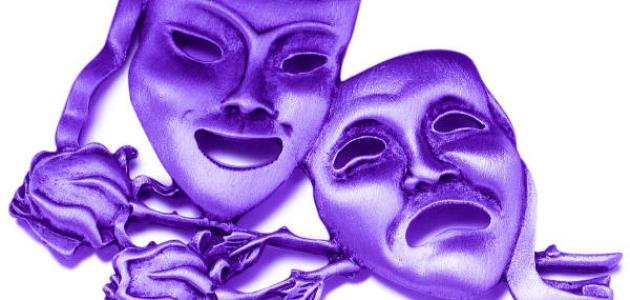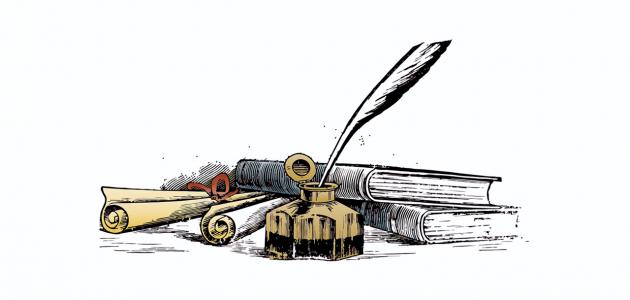Theatrical text
Theatrical text is one of the complex literary texts, due to the multiplicity of issues it addresses, and the viewpoints it clarifies. School students at different stages may be asked to analyze the theatrical text based on an understanding of the text of the play in their hands, or by using clarification of the basic elements of the play and its characteristics and commenting on it in a way Detailed, in addition to mentioning the aesthetics of the text and the special taste of this literary color.
How to analyze the theatrical text
We have a set of steps that must be followed in order to obtain a theatrical text analyzed in a scientific and logical manner, including:
- Learn about theatrical text in general, what is its concept, who are the most important creative authors in this field, and know the formal and stylistic characteristics of theatre.
- Reading the play an extensive and in-depth reading, and reading some summaries that briefly dealt with this play, in order to clarify for us the most important ideas of the play.
- Writing an analysis of the play is an organized and coherent article, it has an introduction, a body, and a conclusion, in which it clarifies and analyzes everything that came in the play from internal or external structure, and it contains an answer to a group of questions that cannot be ignored, and it is assumed that proper language and sentences of proportional length are observed. sequential, consecutive paragraphs.
- Writing the introduction: The introduction has a general framework that governs it, and basic elements that form the focal points of the introduction. There are three elements to the introduction:
- The Author of the Text: Dealing with the author of the text in some detail, helps in analyzing the theatrical text, and understanding the general feeling that dominated the author during his writing of the text, and in this part the focus should be on the author himself, not his surroundings, or the general influences around him.
- The quality of the text and its sources: The quality of the theatrical text and its genre are contemporary prose texts. The main sources from which this text was taken or analyzed are taken into account, and this is to avoid plagiarism. If there are no sources, this part is left.
- The subject of the text: We must assume in all cases that the reader of the analysis is ignorant of the play and its elements, so we rely on summarizing the subject matter of the text first, and clarifying its general ideas, using an exciting and interesting style, and there is no need for a lot of talk and lengthening that is useless, and we believe that six lines in the paragraph talking about the subject Sufficient to contain the ideas and elements of the play.
- Note: In the event that this introduction does not suit your conviction, and you have another way to present it in the essay on the analysis of the theatrical text, you may put the appropriate introduction, but it must be directly related to the subject of literary text analysis.
- Analyzing the show: Scholars in the Ottoman era cared more about the form than the meaning, and focused on literary improvements and artistic methods, but in our current era, both the content and the form are concerned, and this is due to the existence of the press and the diversity of literary genres. Narrative writing techniques, elements of theatrical construction, stylistic and artistic characteristics, and the answer to this question is closely related to the theatrical text, and there is no presence of personal ideas or private opinions in the analysis, because you are linked to the rules of your control, and mentioning private opinions is a departure from the original topic, and elements The play being analyzed is:
- Dialogue: It is the conversation that takes place between the characters, and it also includes the part narrated by the narrator in the event that there is a narrator for the play, and it is the element that works to develop and develop the events.
- Characters: The element of movement in the play is the characters, as they are the main engine of the atmosphere of the play. Each character has a role and characteristics that differ from other characters, and there are basic characters such as the hero, and secondary characters that help the hero.
- The quality of the relationships between the characters of the play: There are formal and clear relationships, and there are hidden relationships, and this element brings together all the relationships that bring together people, whether negative or positive.
- Dramatic conflict element: It is the element that arises as a result of the conflict between the different personalities, or between the person and himself. The conflict may be external or internal, which appears through the person's conflict with himself.
- Place and time: In this element, we must specify the exact time, so we mention the day or month in which the events took place.
- Plot and knot: It is the problem that the playwright tries to solve, and it is the set of events that the audience believes are the most difficult and unresolvable events.
- Type of text: Is it closed with a clear end? When the playwright ends his play by resolving all matters and relationships, it is a closed end, such as when the protagonist gets married after separation and hardships, or is it an open text with an open end, allowing the viewer or reader to determine the end, however he wants.
- The elements of anticipation and retrieval, and these elements are among the most difficult elements to be used in the play. It is possible for the playwright to mention late events and then return to the beginning and complete, which is an aesthetic element in the end, and its presence gives suspense to the reader.
- Employment of sentences: There are two types of sentences: declarative, constructive, and simple and compound sentences.
- The function of the sentences, whether nominal or verbal, the nominal sentence indicates stability and stability, and the actual sentence indicates movement and transformation.
- Conclusion: The conclusion is the paragraph in which the analyst talks about the findings and recommendations he reached through his analysis of the play's text, in a beautiful and attractive style.
- Note: The introduction takes 10% of the analysis, as well as the conclusion, and the remaining 80% is for the analysis of the presentation, or the body.









